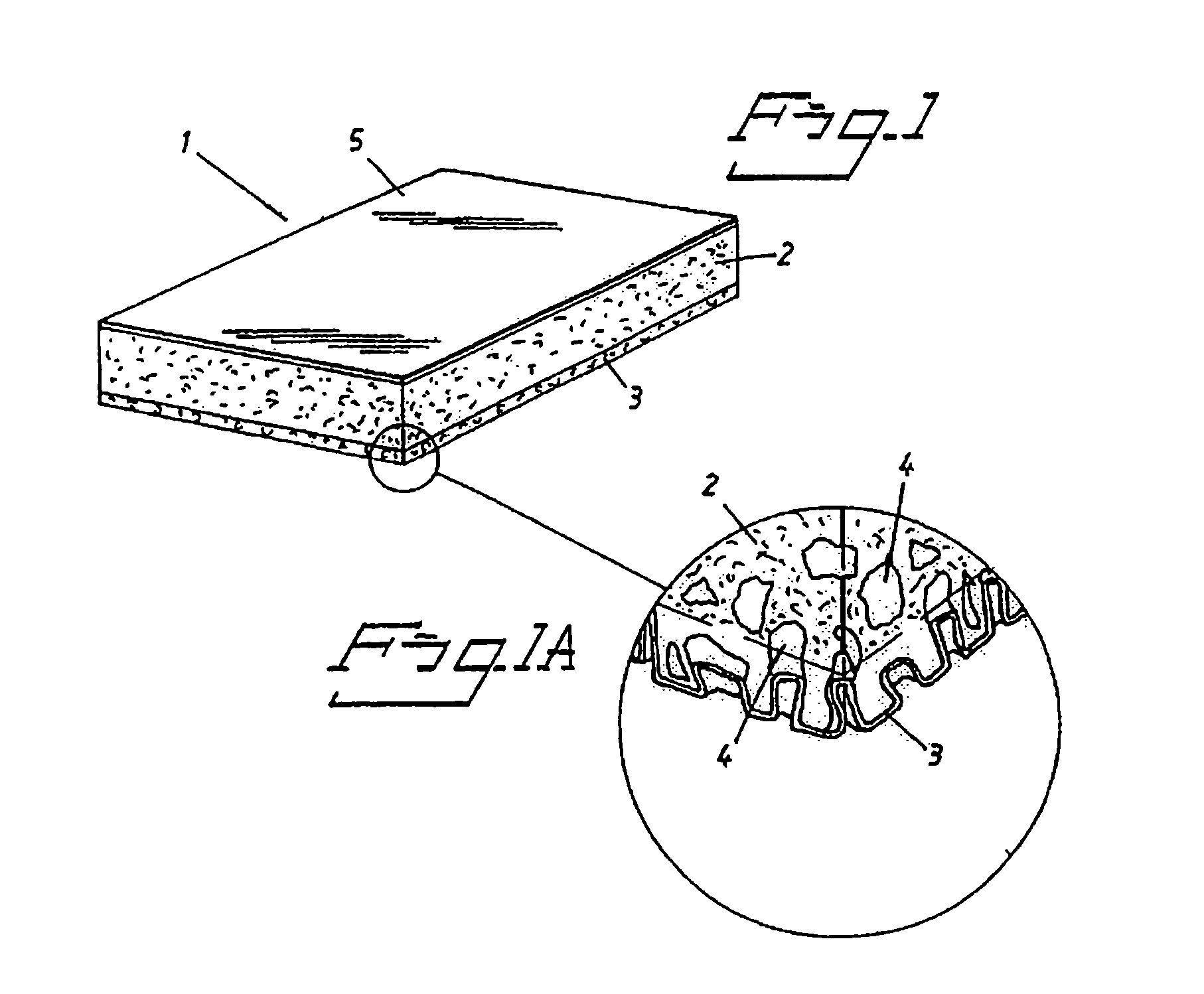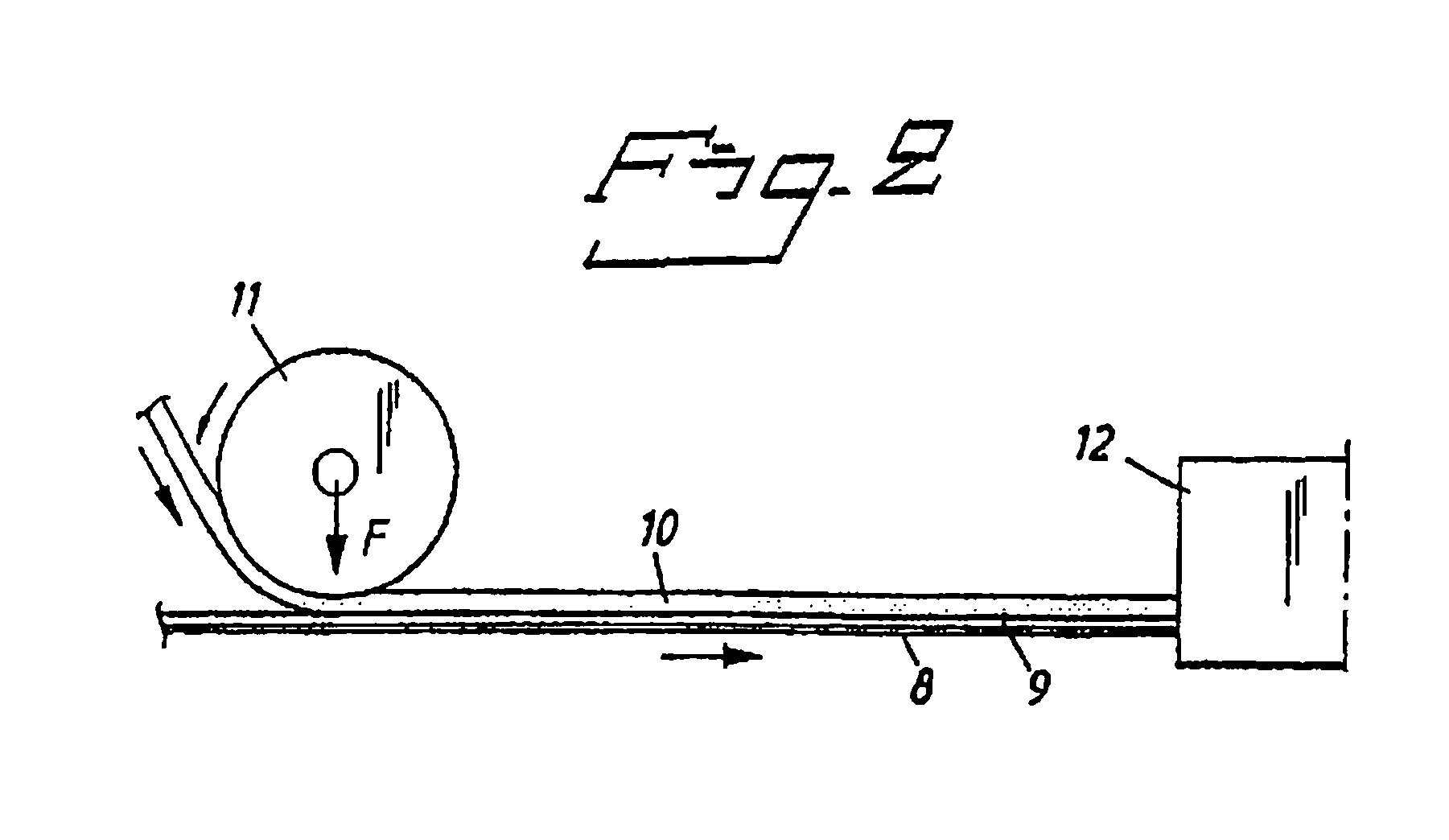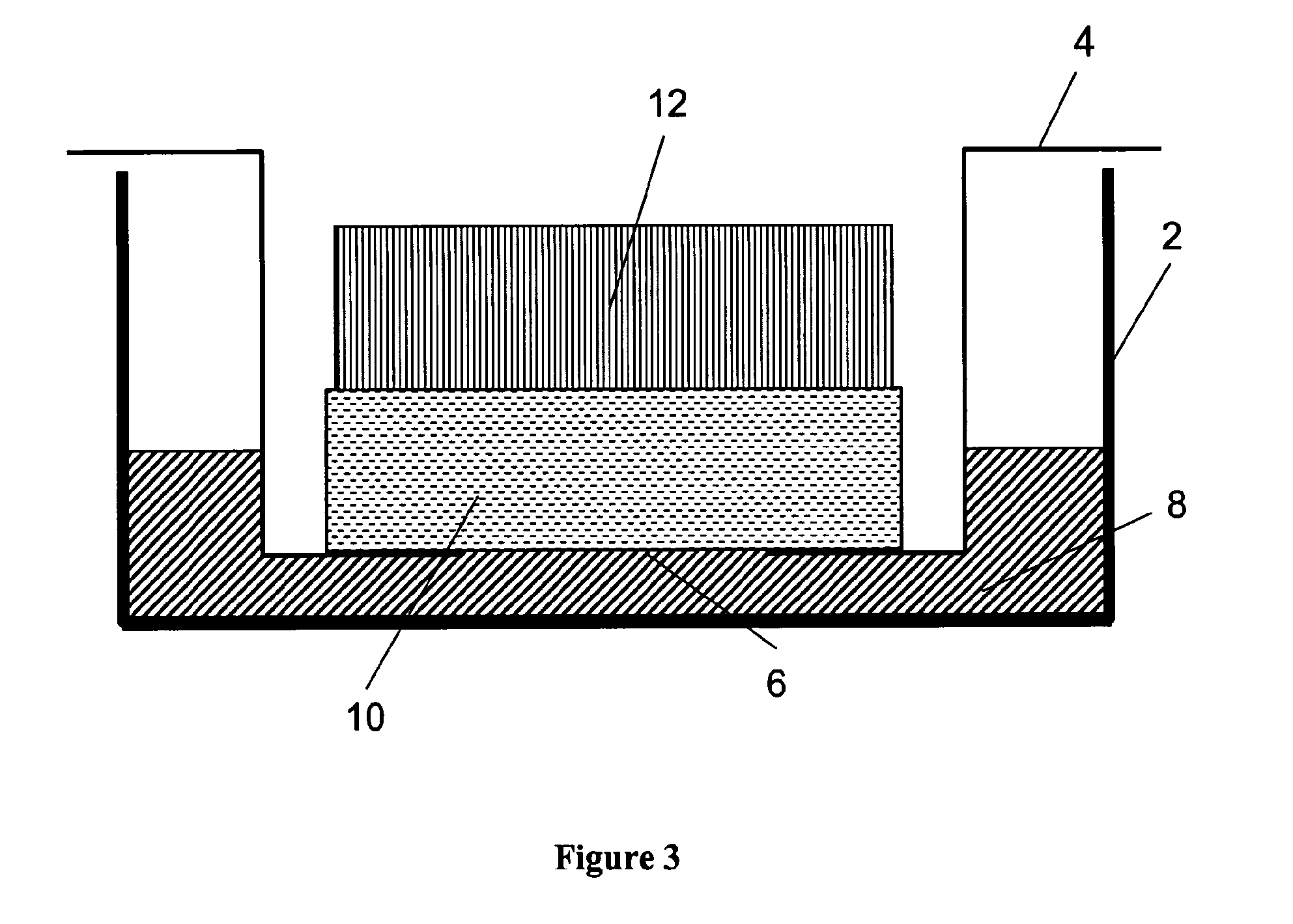Silver-containing foam structure
a foam structure and silver technology, applied in the field of wound dressings, can solve the problems of slow release of silver from the structure, insufficient in other applications, and inability to meet the needs of patients, and achieve the effect of reducing the amount of viable pseudomonas
- Summary
- Abstract
- Description
- Claims
- Application Information
AI Technical Summary
Benefits of technology
Problems solved by technology
Method used
Image
Examples
example 1
Preparation of the Foam Structure
[0059]A water phase for the foam-manufacturing process was prepared by dissolving / dispersing the non-ionic surfactant Pluronic F87, silver sulphate, and active carbon. The final concentrations of these constituents in the water phase amounted to 0.5% (wt) of Pluronic F87, and 2.2% (wt) of silver sulphate. The concentration of dissolved silver sulphate amounted to 0.8% (wt) and the rest of the silver sulphate was dispersed in the water phase.
[0060]Simultaneously, a mould lined with casting paper was prepared. The mould had a sufficient depth so that sheet-formed foam castings having a thickness of 5 mm could be produced.
[0061]The pre-polymer Hypol 2001 (a isocyanate-terminated polyether) was added to the water phase in a dispensing and mixing equipment in an amount of 40% (wt) at room temperature. The resulting mixture was immediately transferred to the casting mould. The foaming amounted to 30 s, and then the foam was cured for 10 minutes. After curi...
example 2
Absorption of the Foam Material
[0062]Samples of the foam product produced in Example 1, Sample A, and two commercially available products, Sample B as described in WO2002062403 and Sample C as described in U.S. Pat. No. 5,681,575(A) and U.S. Pat. No. 5,837,275(A), were cut into 6×6 cm test pieces and weighed. Subsequently, the test pieces were soaked in an excess amount of tap water. After three hours, the pieces were re-weighed. The results obtained are shown in Table 1:
[0063]
TABLE 1AbsorptionAbsorptionDry weight (g)Wet weight (g)(g / 36 cm2)(g / cm2)Sample A2.8235.532.70.91Sample B3.5228.525.00.69Sample C3.3133.029.70.82
[0064]The results show that the product of Example 1 (Sample A) has an as good or slightly better absorption capacity as commercially available products.
example 3
Silver Release
[0065]Circular samples having a diameter of 20 mm were punched out from the material produced according to Example 1, here referred to as Sample A, and two commercially available products, Sample B as described in WO2002062403 and Sample C as described in U.S. Pat. No. 5,681,575(A) and U.S. Pat. No. 5,837,275(A). FIG. 3 discloses some of the equipment for measuring silver release, namely a Falcon™ 6 well Multiwell unit (2) and a corresponding cell culture insert both from Becton Dickinson Labware (4) (The diffusion membrane in the bottom of the cell culture insert (4) was removed and replaced by a waterproof polyamide film. An opening (6) having a diameter of 12 mm was punched out from the bottom film. The dry sample (10) was placed in cell culture insert (4) on top of the opening (6). A weight (12) made of stainless steel, weighing 15 g and having a diameter of 20 mm was arranged on top of the sample (10) in order to compress and fix said sample to the bottom film.
[00...
PUM
| Property | Measurement | Unit |
|---|---|---|
| pore size | aaaaa | aaaaa |
| pore size | aaaaa | aaaaa |
| temperature | aaaaa | aaaaa |
Abstract
Description
Claims
Application Information
 Login to View More
Login to View More - R&D
- Intellectual Property
- Life Sciences
- Materials
- Tech Scout
- Unparalleled Data Quality
- Higher Quality Content
- 60% Fewer Hallucinations
Browse by: Latest US Patents, China's latest patents, Technical Efficacy Thesaurus, Application Domain, Technology Topic, Popular Technical Reports.
© 2025 PatSnap. All rights reserved.Legal|Privacy policy|Modern Slavery Act Transparency Statement|Sitemap|About US| Contact US: help@patsnap.com



